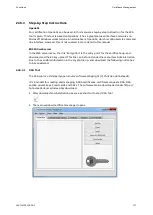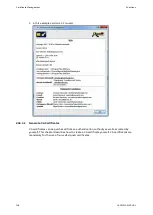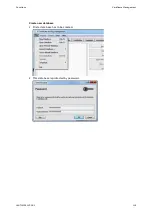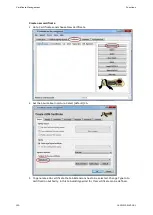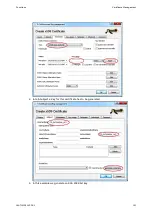
Virtual Router Redundancy Protocol (VRRP)
Functions
2.32 Virtual Router Redundancy Protocol (VRRP)
The Virtual Router Redundancy Protocol (VRRP) serves the fail safeguarding of gateways by
using redundant routers.
Failures in routed Layer-2 networks can be countered with redundant connections and
dynamic routing protocols.
The Spanning tree protocol offers this function in Layer-2 networks. In general only a single
standard gateway can be found at the changeover from Layer-2-subnetworks to Layer-3-
networks.
The gateways can be set-up redundantly when using VRRP by grouping several physical
routers to one logical router.
This logical router uses a virtual MAC address and a virtual IP address that is transferred in no
more than three seconds from the master router to the backup router (hot standby) in case
of an error.
Router IP: x.y.z.2
VRRP IP: x.y.z.1
Router IP: x.y.z.3
VRRP IP: x.y.z.1
Router A
Router B
Figure 30: VRRP with EDS500 devices
EDS500 devices support VRRP if they are operated as router (refer to Chapter 2.31,
"IP Routing"). For this the gateway IP address is configured as VRRP address for the IP
subnetwork that shall contain a redundant gateway.
106
1KGT151021
V000 1


























